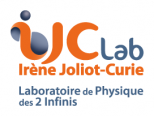Detecting gravitational waves requires managing a lot of data, and being able to find the signal among all the noise affecting the detector. How does the Virgo team achieve this important task?
Let’s hear it from Nicolas Arnaud, IJCLab researcher.
https://www.facebook.com/EGOVirgoCollaboration/videos/343550827501409/









